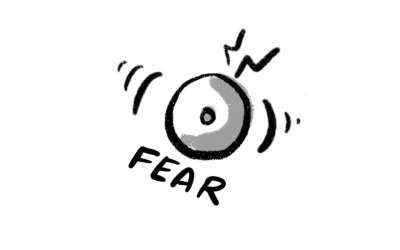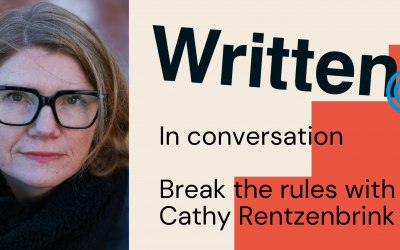Diaries are back in fashion — and with modern writing journals offering goal setting, habit tracking and writing inspiration, writers are beginning to fall back in love with the books they write for their own eyes only. Here’s our beginner’s guide to journaling and freewriting.
Whether you rushed home from school to scribble about your latest crush or were forced to update one over the summer holidays, keeping a diary was a rite of passage for many of us back in the day.
Maybe you used yours to keep a track of feelings, dreams, food or appointments — or better yet, writers’ notes for quick character sketches or ideas that would otherwise vanish.
Bullet-proof journaling
In essence, this is all a journal is: a blank notebook, filled with anything you need to keep a record of (and maybe consult on a semi-regular basis).
But a journal can be so much more, as evidenced by the recent explosion of bullet journaling.
The Bullet Journal is a concept dreamt up by Ryder Carroll, a digital product designer living in Brooklyn.
>> Read more: A guide to tracking your writing – why noticing how you write will transform your practice
He created it through trial and error after realising he needed an analogue system to organise and record his busy lifestyle, which would work seamlessly with his digital devices and allow him to quickly and thoroughly jot down as much information as he needed.
No mean feat, but an idea that sparked a community of Bullet Journalists all over the world who have improved their lives simply by needing less to write more: all you need to start is a blank notebook.
How to ‘journal’
At the heart of Bullet Journaling is a system Carroll calls ‘rapid logging’: simply write the date at the top of the page, then add short-form notation paired with bullets (little hand-drawn icons) to organise your day.
For instance, a small circle for an event that happened to you, a tiny lightbulb for an idea, an eye to indicate something to research later, or knife and fork for food logging.
This system doesn’t tie you to complex apps to log your day — and it’s readable at a glance.
Of course, with such tiny yet comprehensive notes taking care of the shopping list, meetings and everything else a bit boring, this frees up the rest of your journaling for the real fun.
Freewriting
Freewriting is an excellent way to get the creative juices flowing too.
If you’re in a rut, or want to exercise your writing muscle, set a timer for five minutes and just write anything. Gobbledegook, a stream of consciousness, a nonsensical poem… whatever’s in your head.
It helps clear out all the ‘junk’, sweeping your mind clean to allow for breathing space. Many authors swear by it, as it’s helped them uncover new ideas, make personal breakthroughs, or just clear their minds for a productive writing day.
>> Read more: How to write a short story – 8 expert tips
You also might find writing longhand gives you a different writing voice — this can be useful for when you’re stuck in a project, or need to add extra depth to a scene you might normally rush.
You can also use your journal to plot out your stories if you’re a visual thinker — drawing real, squiggly lines between boxes representing your characters and chapters, adding notes and drawings.
Writing habits
However you decide to use your journal, it’s important to get into the writing habit.
Add to it daily, if you can, and schedule some time — just after you wake up or before you go to sleep is ideal — dedicated to noting down ideas, thoughts and plans.
If you’re shopping for a journal, it doesn’t matter what you buy, as long as it suits your needs. A large, blank notebook works well: plain paper is good for artistic types who like to draw freeform and have neat handwriting, or buy ruled if you need help staying within the lines.
Graph or dotted paper is ideal for planners, as you have guidelines to help you draw charts and link things up.
>> Read more: How to stop procrastinating for good: a guide for writers
Journaling on the move
You also need to think about where you’ll use your journal: do you plan on keeping it on your bedside table, or in a handbag or backpack?
Ideally, you’ll carry it with you everywhere for when inspiration strikes, so pick something light that’s easily slotted into a backpack or purse.
Treat your journal like an extension of your brain: bring it wherever you go, doodle or freewrite when you’re bored, and you’ll soon find your writing productivity boosted.
Journaling: it’s the most productive form of procrastination!




